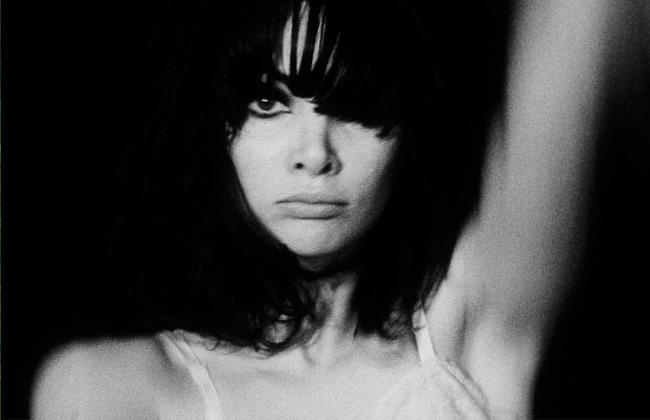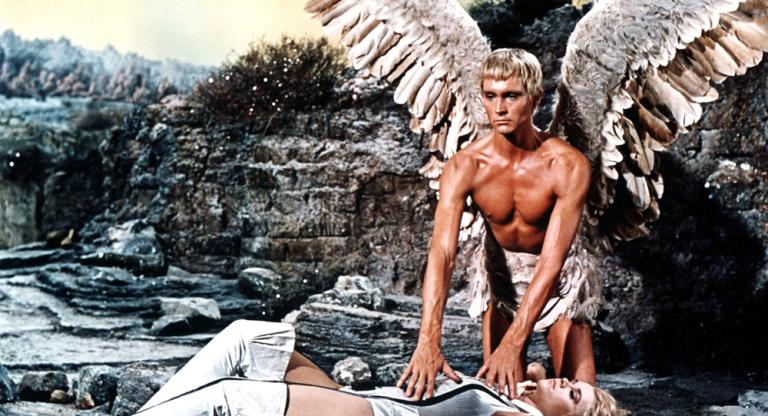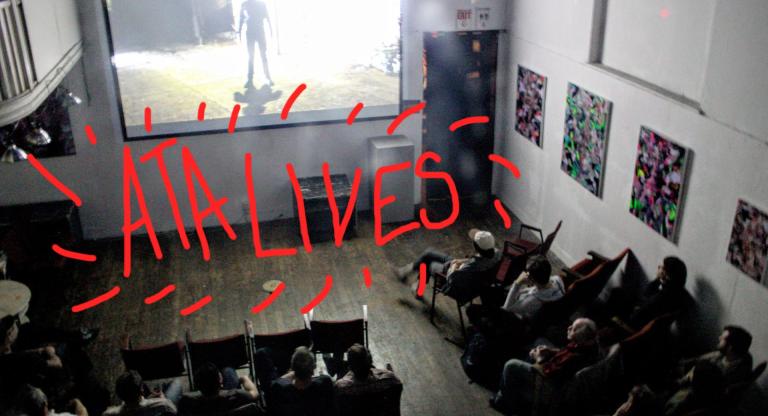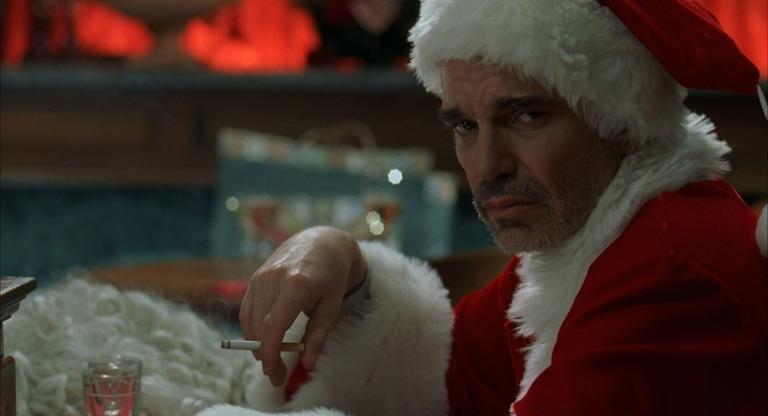In an age of algorithmic feeds and ragebait, the multidisciplinary artist Bruce Conner’s films feel less like artifacts and more like prophecies. American culture has always commodified dissent. Long before social media flattened history and culture into decontextualized flashes of information, the San Francisco artist was dissecting how mass media distorts our reality. By stitching together scavenged footage, he reveals the hidden rhythms of manipulation nestled within popular culture.
Conner dismissed traditional filmmaking as “a rich man’s art form,” opting instead for the democratic act of hunting and recontextualizing existing footage. His first film, A Movie (1958), uses scavenged newsreels, B-movies, softcore pornography, and other found footage to produce a hypnotic critique of violence and spectacle. Car crashes, mushroom clouds, and tightrope walkers collide in rapid succession, their meaning transformed through editing. Respighi’s “Pines of Rome” was chosen as the soundtrack by happy accident. Conner often listened to the radio while splicing film and liked how its apocalyptic grandeur synched to the climax. Much like his sculptures, A Movie builds meaning through fragmentation, turning cultural detritus into a manifesto on image manipulation.
His approach extended to the filmmaking process itself. Ten Second Film (1965) weaponized the medium’s structural debris: countdown numbers, markers, and clapperboards flicker across the screen like a malfunctioning advertisement. Commissioned by the 1965 New York Film Festival, but rejected as a commercial for being “too fast,” it was transformed into a poster. With such a minimal gesture, Conner exposed the arbitrariness of “acceptable” art, undermining institutional gatekeepers with their own tools. What reads as a prank is a sharp critique, using the festival’s promotional needs to dismantle its pretensions.
Continuing his work with found footage, Conner found himself honing in on the rhythms of disparate moving images in Cosmic Ray (1961). Set to an electrifying live recording of Ray Charles’s “What’d I Say,” Cosmic Ray pairs cut images of Beth Pewter dancing nude with fireworks, military drills, and Mickey Mouse cartoons. The film equates sexuality with destruction and spectacle. Unlike more corporatized versions of the medium, Cosmic Ray is chaotic and subversive, using pop music as a vehicle for visual poetry. Conner’s sensory overload approach eerily predicted the contemporary media landscape, where algorithmic feeds echo his disruptive, recombinant vision.
This anarchic collision of sex and war demonstrated Conner’s understanding of mass media’s hypnotic power. Soon, he’d confront its vampiric relationship with tragedy and how it manufactures collective trauma. When John F. Kennedy was assassinated, Conner filmed the endless, looping news coverage directly from his television, spending years editing and re-editing his footage-of-footage to make Television Assassination (1963-1995). It reveals mass media’s obsession with the event, turning it into a grotesque spectacle exploiting a man’s death. The film’s stuttering nature and Patrick Gleeson’s eerie score recreate television’s numbing effect, flattening the event into decontextualized flashes. This critique deepens in Report (1963-67), where Conner used 16mm newsreels of the event to further dissect the media’s trauma-packaging machinery.
By forcing viewers to experience tragedy as spectacle, Conner makes us complicit in the media’s exploitation. He reveals how institutions aestheticize violence, rendering the unthinkable into something consumable. Compiling declassified footage of underwater nuclear tests to a hypnotic effect, Crossroads (1976) puts on display the equally captivating yet grotesque nature of the nuclear weapons that defined the Cold War. He renders annihilation beautiful, forcing viewers to confront its sublime horror and terrifying banality as official government data.
Conner’s grim fascination with systems of power also turned toward the art world’s own exploitation machine. While dissecting corporate media’s commodification of tragedy and trauma, he sought alternatives in the San Francisco underground, and became increasingly jaded by the fine art world. Concealed within the film portrait Vivian (1964) is his deepening critique of arts institutions. Footage of Vivian Kurz, the film’s subject, lying inside a gallery vitrine at one of Conner’s shows, speaks to his own suffocation by the mechanics of commercial art. By the 1970s, after a successful but soul-crushing prestigious gallery contract institutionalizing his work gave him chronic ulcers, Conner almost abandoned the art world entirely. During this high-stress time, he kept his humor: at a contract-mandated event, he distributed “I Am Bruce Conner” buttons to other guests before leaving, transforming his obligation to make an appearance into Dadaist mischief.
The tension he felt between fine art institutions and counterculture defined his career. After commercial galleries nearly broke him, San Francisco’s underground became even more of a refuge. Conner had assumed the role of both participant and archivist of San Franciscan counterculture for decades, filming sculptural painter Jay DeFeo’s eviction in The White Rose (1967) and slam dancing in the pit with teenage punks well into his 40s. Camera in hand, he photographed early punk shows at Mabuhay Gardens with the same irreverent precision that he brought to his films.
Punk’s DIY ethos mirrored his own: this energy culminated in a film for Devo’s “Mongoloid” (1978), distilling punk’s sneering wit into an Americana collage mocking conformity and suburban life. The success of this collaboration led to an invitation from Brian Eno and David Byrne to make America is Waiting (1981), a parody of paranoia that remains depressingly relevant. Using sourced material from the 1950s, he criticized reactionary politics, Western individualism, the Reagan administration, and military violence. When MTV rejected the video as part of their early programming that same year, it proved that corporate media always sanitizes rebellion. Yet Conner’s films had already weaponized the tactics MTV would soon commodify, turning his subversive editing techniques into a digestible product.
This pattern of co-optation was nothing new to Conner. Years before punk was commercialized, he approached the fragility of counterculture in Looking for Mushrooms (1959-67), which uses strobing single-frame exposures made while foraging for psilocybin in rural Mexico to simulate a psychedelic trip. Conner undercuts this romanticism with urban scenes from San Franciscan streets, subtly critiquing affluent Western tourists who divorced psychedelics from tradition and ritual by commodifying its use. This tension foreshadows Silicon Valley tech bros—the ideological heirs of Bay Area hippies—who turned sacred plants into productivity hacks, stripping them of their cultural roots: proof that attempts to transcend the capitalist system often end up repackaged by it for profit.
Even transcendence can be reduced to a product, and Conner understood this better than most. He saw how institutional power metabolizes dissent, leaving nothing but a consumable aesthetic in its wake. Yet in this cycle, Conner found his radical purpose: if co-optation was inevitable, subversion must be perpetual. By hijacking the imagery of mass media, he exposed its capacity for manipulation while celebrating the beauty of its debris. He turned reuse into rebellion, and his works remain blueprints for artistic resistance. In an era of endless content and curated realities, Conner’s work asks: Who controls the images we see? And what happens when we reclaim them?
Bruce Conner: Films from the BAMPFA Collection will screen at BAMPFA in two parts, on Sunday, June 15 and Friday, June 27, all on 16mm, with Crossroads on 35mm.



